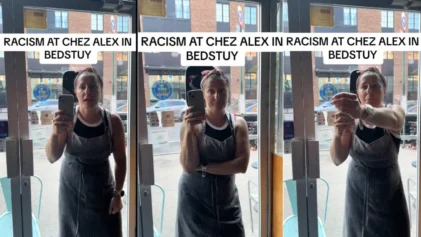The role of videos in the fight for social justice has become a key component to gathering momentum across social media and applying pressure on authorities to properly investigate allegations of misconduct or white-on-Black violence occurs.
The video captured by William “Roddie” Bryan in the trial of Travis and Greg McMichael and Bryan himself, played a key role in not only bolstering national attention, but for the jury who reached three guilty verdicts for the men involved in Ahmaud Arbery’s death.
“That video was a lifesaver, it didn’t save Ahmaud’s life, but I believe it saved a lot of other lives because in this particular case, it helped us come to this guilty verdict,” said John Perry II, senior pastor of Mount Sinai Missionary Baptist Church in Brunswick, Georgia.
Perry was among many local activists who supported the Arbery family and kept the pressure on local officials to see the case through to a fair trial. He also had a front row seat for the entire case involving Arbery’s death.
Perry says in the first two months after Arbery was killed and before any arrests were made, the Brunswick community disputed claims 25-year-old Arbery was gunned down for jogging through the neighborhood the McMichaels didn’t want him in.
“We were divided because people didn’t want to believe the worse of people they grew up with and they knew, but when that video came out, it wasn’t just evidence to convict them, it was the evidence that was necessary for us as a community to come together,” he said.
Video evidence has played a key role in such high-profile cases from Arbery to George Floyd when it comes to what’s widely considered to be modern-day lynchings of Black people, but Kimberly Muktarian, Ph.D., says documenting such violence has gone on for years.
“You talk about the origins of lynching, and how they used to take a picture or photo of themselves in the middle of the lynching and send it out because they knew they would not be reprimanded for this,” said Muktarian.
Muktarian says during the civil rights movement however, Black leaders used the same powerful images to add credibility to the movement and call out blatant and systemic racism.
“Martin Luther King took that same power from them and used the media to show the abuse that Blacks were suffering from across this nation and Emmett Till’s mother also had an open casket to show that same lens, we had to tell that story through the same lens so when we don’t have that aspect of our fight, we cut our voice in half,” she said.
There are cases where no camera captured the victim’s final moments such as Trayvon Martin’s case in 2012, where the 17-year-old was shot to death by former neighborhood watch captain, George Zimmerman, in Sanford, Florida. A jury acquitted Zimmerman in Martin’s death.
Breonna Taylor died at the hands of a white police officer in Louisville, Kentucky in 2020 when a no-knock warrant was executed at her apartment. Taylor was shot and killed when officers returned fire after her boyfriend fired a shot at them as they broke down the door.
The officers involved were fired but not criminally charged with homicide. Incidents like Martin and Taylor’s have helped inspire a generation of people to be at the ready with their phones in hand whenever suspected wrongdoing happens.
“People have their mobile phones on them and their ready at a moment’s notice to get that footage so they can put it up on social media to get more likes and views and there’s a negative side to that, but the positive side to that is that we’ve been able to capture some heinous acts on camera and in the process of that, use justice to get justice for people who need it,” said Perry.
Despite video evidence making a difference in some cases, it’s not always a guaranteed victory in the fight for justice. In 1991, video captured Rodney King beaten by four Los Angeles police officers, yet the officers involved were acquitted of the assault. In 2014, Eric Garner was choked to death by a New York police officer on Staten Island, and the encounter was captured on cellphone video. While the officer involved was fired from the NYPD, he was not criminally charged.
“It doesn’t always guarantee the outcome for us but what it does do is allows us to see the truth and I believe the truth is the foundational thing that we’re after even if the justice doesn’t give us the outcome that we want,” said Perry.
Muktarian believes everyone has a social responsibility to hold those accountable of suspected wrongdoing and recording the incident can make all the difference.
“If you saw mistreatment, you would want others to have the duty to intervene, take that step just like the young lady did with George Floyd, for taking social responsibility, it’s just not police accountability it is all of our responsibility,” she said.
More news from our partners:
‘It Hasn’t Been Good.’| Joel Embiid Returns To Court, Says He Thought COVID Was Going To Kill Him


